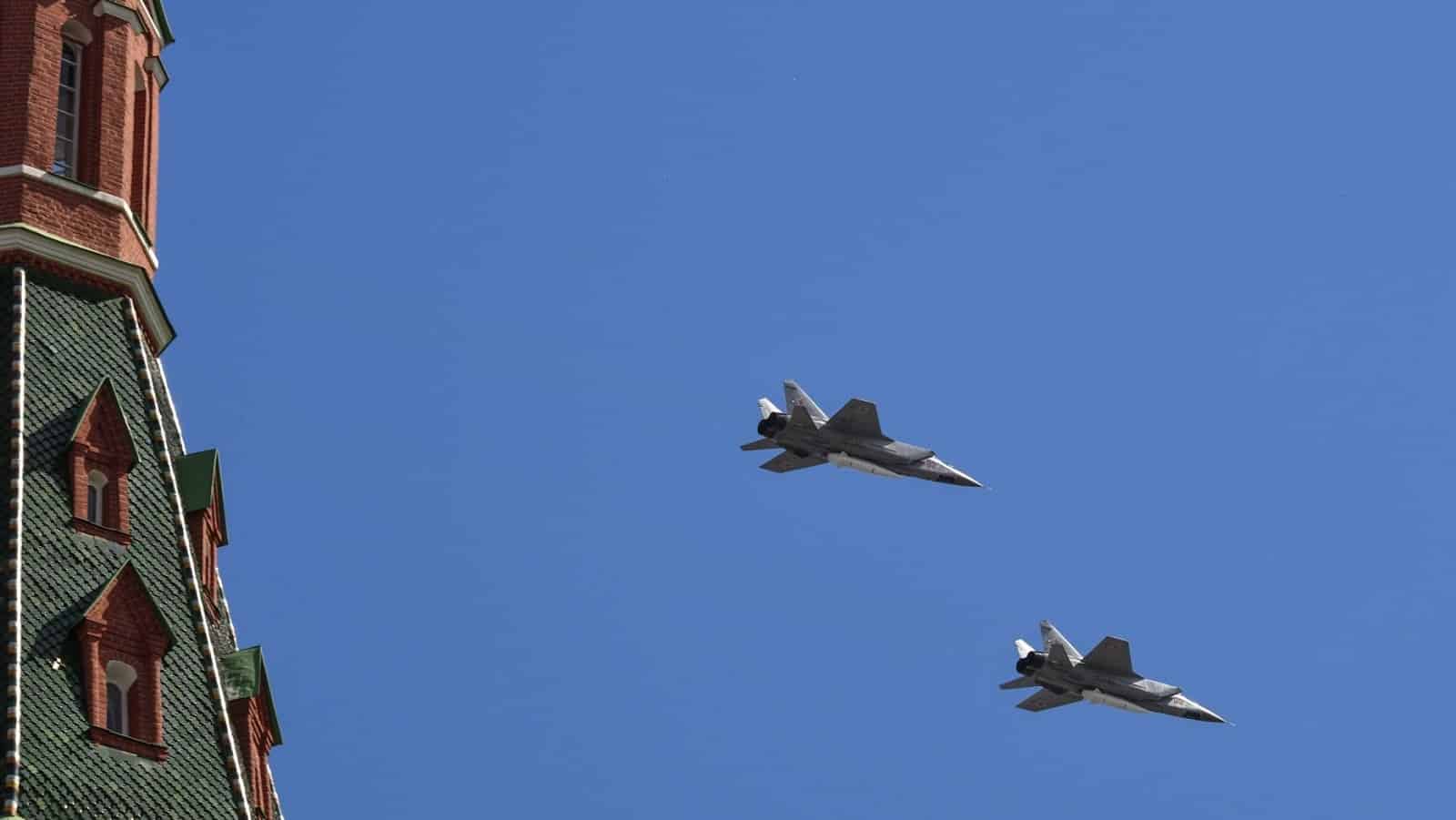Current missile defense systems are not capable of stopping a variety of weapons
Can the US defend against hypersonic missiles? By common consensus, existing US air defense systems are not capable of doing so. What would it take to fix existing systems or deploy new ones?
There are at least three major types of hypersonic weapons, some of them already deployed by Russia and China, and others under development in the United States.
The first is known as a hypersonic glide vehicle. The Russians have already deployed one of these, called the Avangard. This is a weapon that carries six or more nuclear warheads and is launched from an Intercontinental Ballistic Missile. For Russia, the missile of first choice is the newly introduced RS-28 Sarmat, a liquid-fueled, heavy thermonuclear intercontinental ballistic missile. As the missile reaches near the end of its trajectory it launches a hypersonic glide vehicle (Avangard) that can maneuver to evade missile defenses.
Current day strategic missile defense systems are not optimized to go after maneuvering threats – these are optimized against predictable warhead reentry ballistic trajectories.
The second threat is a long-range maneuvering scramjet powered vehicle – essentially a cruise missile that operates in the upper atmosphere. To get intercontinental range, using oxidizing fuels (such as liquid hydrogen and liquid oxygen) is excluded; Russia is now testing a hypersonic nuclear fueled weapon called Burevestnik, part of the 9M730 project. This weapon uses air as its fuel that is highly compressed and fed into a hot unshielded nuclear reactor that burns the fuel and powers the weapon. If this weapon continues in development (there have been three failures with dangerous results), Burevestnik will have unlimited flight range and the ability to penetrate existing air defense systems.
The third threat are tactical cruise missiles, such as the Russian Kinzhal (Dagger) that can be launched from a MiG-31 BM or another platform, and the Zircon (3M22) which is ship launched and will soon be operational on two Russian warships including the Admiral Grigorovich class and Admiral Gorshkov-class frigates. These tactical weapons probably use conventional explosives but could be equipped with nuclear warheads. The range is around 1,000 km.
US strategic defenses cannot currently cope with hypersonic threats. The same can be said of tactical defense systems like the Patriot (PAC 3), AEGIS and RIM-116 (Rolling Airframe Missile).
Even without the hypersonic cruise missile threat, US strategic missile defenses are very limited, and there is no missile defense system protecting the northern, eastern or southern United States.
For example, THAAD (Terminal High Altitude Area Defense) has been deployed in Guam, the United Arab Emirates, Israel, Romania, and South Korea, but the Israel and Romania deployments were only temporary. THAAD might be able to hit a hypersonic glide vehicle, but it can’t deal with a hypersonic vessel that maneuvers. THAAD’s radar also might not be able to track a cruise-type hypersonic vehicle at lower altitudes.
The Ground-Based Mid-Course Interceptor (GBI) is deployed at Fort Greely, Alaska and Vandenburg Air Force Base, California. Currently, there are 44 interceptors deployed. GBI is America’s primary ballistic missile defense of the homeland system. The Pentagon has been aware that GBI’s current interceptor missiles won’t work against hypersonic threats. In late August DOD canceled work on an updated interceptor, surprising the industry. The reason was the inadequacy of the system (based on DOD supplied requirements) to address the hypersonic threat, particularly hypersonic glide vehicles.
Neither THAAD nor GBI are what can be called effective systems. While they sometimes hit a target in tests, they also miss many, even when the target trajectory is known and to a degree optimized for intercept. And in these tests the assumption is always that there is no surprise and that everything works perfectly (no one asleep at the switch).
THAAD, GBI and SM-3 II-A/II-B, the Navy’s strategic ballistic missile defense system all use so-called kinetic warheads to intercept an incoming missile. A kinetic warhead must actually hit the incoming missile with perfect accuracy.
Kinetic warheads were adopted to make missile defenses more acceptable for military and civil reasons. A kinetic warhead absolutely destroys an incoming threat or misses it altogether. An explosive warhead, by contrast, may damage but not always destroy an incoming threat. When Iraq fired Scud missiles at Israel, the Patriot air defense system often damaged them but did not destroy all of them, so the missiles still hit the ground and exploded, though not necessarily where they were aimed. One reason the Patriot had a hard time knocking out the Scuds was that its explosive warhead was too small; another was that the Scud missiles tumbled as they descended, probably because they were out of fuel and had questionable aerodynamics. This made a kill against these missiles challenging.
A kinetic interceptor used against hypersonic weapons has been called using a bullet against a bullet – a difficult trick. New technology and new approaches are needed if the United States wants to support a credible defense against strategic and tactical threats.
Brilliant Pebbles Revisited
Brilliant Pebbles was part of the Strategic Defense Initiative (SDI) announced by President Ronald Reagan in 1983 and canceled in 1994. The basic idea was to put in space a non-nuclear system of satellite-based interceptors designed to use high-velocity, watermelon-sized, teardrop-shaped projectiles made of tungsten as kinetic warheads. While the system was never deployed, it was extensively studied and, among the many different SDI proposals, Brilliant Pebbles was the best of the lot. The advantage of Brilliant Pebbles satellites was that they were designed to destroy incoming ICBMs once they lifted into space and before they unleashed their warheads. No existing ballistic missile defense system deployed by the United States can do this.
Because brilliant pebbles would destroy an incoming missile this early in its flight path, there would not be a chance to launch a hypersonic glide vehicle, and the glide vehicle along with the missile carrying it, would be destroyed.
By STEPHEN BRYEN, ASIA TIMES
Redazione
La redazione di Babilon è composta da giovani giornalisti, analisti e ricercatori attenti alle dinamiche mondiali. Il nostro obiettivo è rendere più comprensibile la geopolitica a tutti i tipi di lettori.
L’evoluzione dei sanitari a terra: design moderni e materiali innovativi per una scelta sempre più popolare
23 Dic 2024
Quando si parla di design di interni e arredamento sono tantissimi i fattori che entrano in gioco. Ciascuno di noi ha…
Se le questioni di genere dettano le agende di politica estera
19 Dic 2024
Il perseguimento di politiche identitarie da parte dell'establishment della politica estera occidentale sta portando a…
Dall’origine straniera all’icona americana: il fenomeno dello sport negli Usa
14 Mar 2024
Molti sport americani sono accomunati da un aspetto particolarmente curioso: raramente sono davvero nati sul suolo…
Roulette europea, francese o americana? Ecco un approfondimento
22 Set 2023
La roulette è un classico intramontabile dei casinò, amata da milioni di appassionati in tutto il mondo. Una delle…




